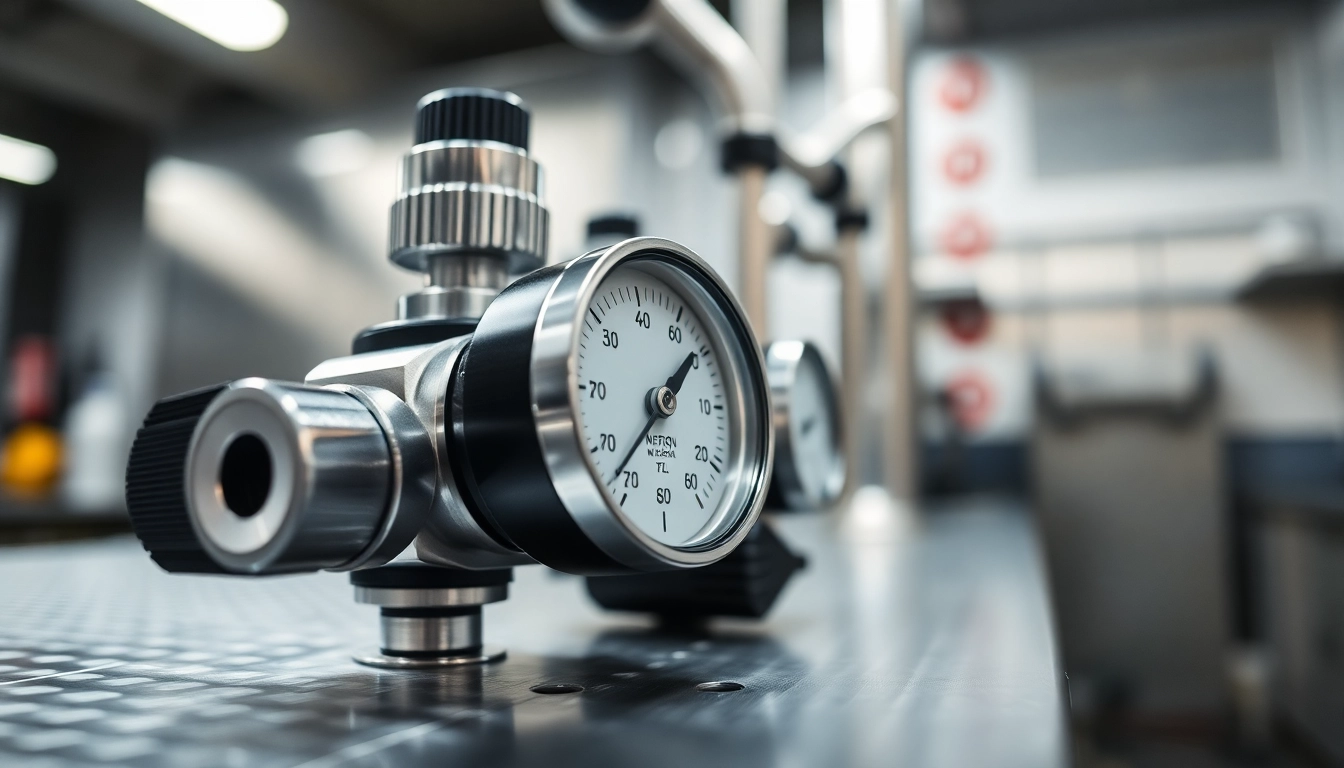Understanding Precision Die Cutting
Precision die cutting is an intricate process that transforms raw materials into precisely shaped components. This technique is invaluable in a variety of industries, from packaging to electronics and medical devices, ensuring efficiency, uniformity, and high-quality results. As companies seek to enhance production while minimizing waste, precision die cutting emerges as an essential service for meeting the dynamic needs of modern manufacturing.
What is Precision Die Cutting?
At its core, precision die cutting involves the use of various cutting tools to shape materials with extreme accuracy. This process can utilize a range of cutting devices, such as flatbed and rotary die cutters, to produce different shapes and sizes based on specific design requirements. The primary goal is to achieve exact measurements and clean cuts that suit the final application’s specifications.
Precision die cutting can handle a multitude of materials, including paper, cardboard, plastics, metals, and composites. This versatility allows manufacturers to create products ranging from simple labels to complex part shapes used in high-tech equipment.
Applications of Precision Die Cutting
The applications of precision die cutting are vast and varied, impacting numerous sectors:
- Packaging: Companies utilize precision die cutting to create custom boxes, displays, and protective packaging.
- Automotive: Die cutting is essential for manufacturing gaskets, seals, and insulation used in vehicles.
- Medical: Precision parts, such as adhesive dressings, surgical masks, and gauzes all rely on accurate cutting for effectiveness.
- Electronics: Precision die cutting is used to create components like circuit board parts and insulation materials.
- Textiles: Fashion and upholstery industries utilize die cutting for patterns and fabric cuts.
Benefits Over Traditional Cutting Methods
When compared to traditional cutting methods such as manual cutting or basic machinery, precision die cutting offers several distinct advantages:
- Accuracy: Precision die cutting can produce highly accurate shapes, achieving tolerances as tight as +/- 0.005 inches depending on the material.
- Speed: The automated nature of precision die cutting allows for rapid production of large quantities, significantly reducing turnaround times.
- Waste Reduction: With precise cuts, companies can optimize material usage, leading to reduced waste and lower costs.
- Design Flexibility: This cutting method allows for complex shapes and designs, accommodating varied specifications without compromising on quality.
The Precision Die Cutting Process
Material Selection for Precision Die Cutting
Choosing the right material is crucial in precision die cutting. Factors such as thickness, stiffness, and texture impact the cutting process and the final product’s quality. Here are some common materials used in precision die cutting:
- Foams: Available in various densities and thicknesses, foams are frequently used in packaging and insulation.
- Adhesives: Adhesive-backed materials are cut into shapes that allow for easy application.
- Fabrics: Used in industries ranging from fashion to automotive, fabrics require specific cutting techniques to avoid fraying.
- Plastics: A versatile material often used for labels and protective covers.
Steps Involved in the Die Cutting Process
The die cutting process can be summarized in several key steps:
- Designing: Everything starts with a design. This design is typically created using CAD software to ensure accuracy.
- Creating the Die: A die is made based on the design specifications. This can be a steel rule die or a laser-cut die, depending on the type of precision die cutting being used.
- Material Setup: The chosen material is prepared and set onto the cutting machine.
- Cutting: The machine applies pressure to cut the material using the die, getting the precise shape defined by the design.
- Finishing: Depending on the requirements, additional processes may include peeling away excess material, applying adhesive, or printing.
Safety Measures in Precision Die Cutting
Safety is paramount in any manufacturing setting. Operators must adhere to safety protocols to minimize risks associated with precision die cutting. Key safety measures include:
- Proper Training: Ensure that all staff are trained in the operation of die-cutting machines.
- Protective Gear: Operators should wear safety glasses, gloves, and ear protection to mitigate workplace hazards.
- Equipment Maintenance: Regular maintenance checks should be conducted to guarantee the safe operation of machinery.
- Emergency Procedures: Clearly outlined emergency shutdown protocols can prevent accidents and injuries.
Types of Precision Die Cutting Techniques
Rotary Die Cutting
Rotary die cutting employs a cylindrical die that continuously rotates to cut material. This method is particularly effective for high-speed production runs and is favored in industries that require the quick creation of large quantities of die-cut parts.
Benefits of rotary die cutting include:
- Efficiency: Ideal for long runs due to its speed and reduced setup times.
- Continuous Flow: The ability to cut while feeding materials results in less downtime.
However, the initial setup costs can be higher, making rotary die cutting more suitable for large production volumes.
Flatbed Die Cutting
In flatbed die cutting, a flat die is pressed against the material to perform the cutting. This method is revered for its ability to handle thicker materials and is effective for short-run jobs or intricate designs. Its versatility makes it a common choice in many sectors.
The advantages of flatbed die cutting include:
- Versatility: Capable of cutting a wider variety of materials.
- Precision: Excellent for designs requiring tight tolerances.
Laser Die Cutting
Laser die cutting uses focused laser beams to cut materials with a very high degree of precision. This technique is particularly effective for materials that are difficult to cut using traditional methods, and it allows for intricate designs that would be challenging to achieve otherwise.
Benefits of laser die cutting include:
- Fine Detail: Capable of producing intricate designs without significant setup time.
- Material Diversity: Effective for cutting thin metals, plastics, and fabrics without fraying.
- Minimal Waste: The precision of laser cutting leads to less scrap material.
Choosing the Right Precision Die Cutting Service
Factors to Consider When Selecting a Vendor
When seeking a precision die cutting service, several factors must be considered to ensure that you partner with the right vendor:
- Experience and Expertise: Look for a service provider with a solid track record in precision die cutting, particularly in your industry.
- Technological Capability: A vendor should utilize advanced technologies for efficiency and improved quality standards.
- Customer Support: Evaluate the level of customer service, including responsiveness and problem-solving capabilities.
Evaluating Quality and Precision Standards
High-quality precision die cutting services abide by strict standards to ensure repeatable, uniform results. Consider the following evaluation criteria:
- Certifications: Look for ISO certifications or industry-specific quality standards that indicate a commitment to excellence.
- Quality Control Processes: Ensure the vendor implements rigorous quality assurance procedures to maintain precision and accuracy in production.
Cost Considerations and Budgeting
Cost efficiency is crucial while selecting a precision die cutting service. To achieve the best results, consider the following:
- Initial Setup Costs: Be aware of the setup costs involved in tooling and production runs.
- Unit Price: Obtain detailed quotes outlining the cost per unit, including pricing structures for varying quantities.
- Long-Term Relationships: Explore potential volume discounts or loyalty benefits when working with a vendor long-term.
Future Trends in Precision Die Cutting
Technological Advancements in Die Cutting
The precision die cutting sector is evolving rapidly, driven by technological advancements such as automation, robotics, and the integration of AI. The rise of smart machines allows for improved efficiency and reduced human error, leading to enhanced production capabilities.
Sustainability in Precision Die Cutting
As the industry shifts towards more sustainable practices, many manufacturers are adopting eco-friendly materials and waste-reduction techniques. Companies that embrace sustainable die cutting processes are more likely to appeal to environmentally conscious consumers.
Market Trends and Industry Insights
The demand for precision die cutting services is projected to grow significantly as industries invest in customization and on-demand production capabilities. The shift towards lightweight materials in sectors such as automotive and aerospace is set to drive innovation and the necessity for precise material handling.


